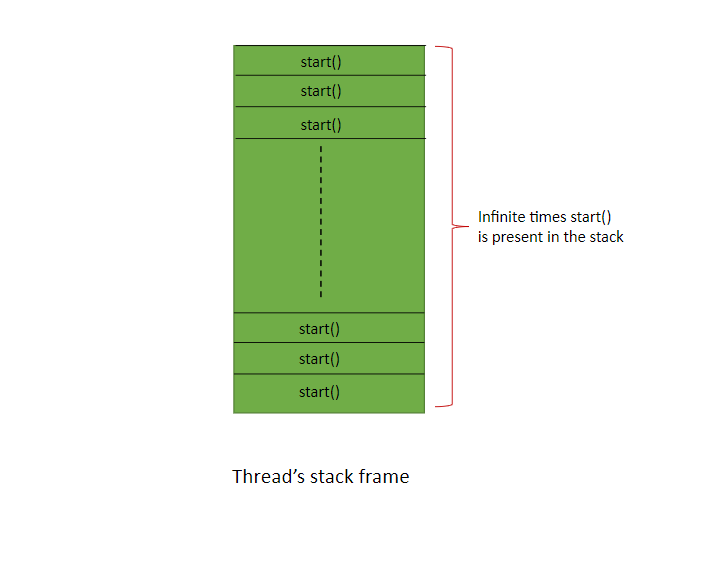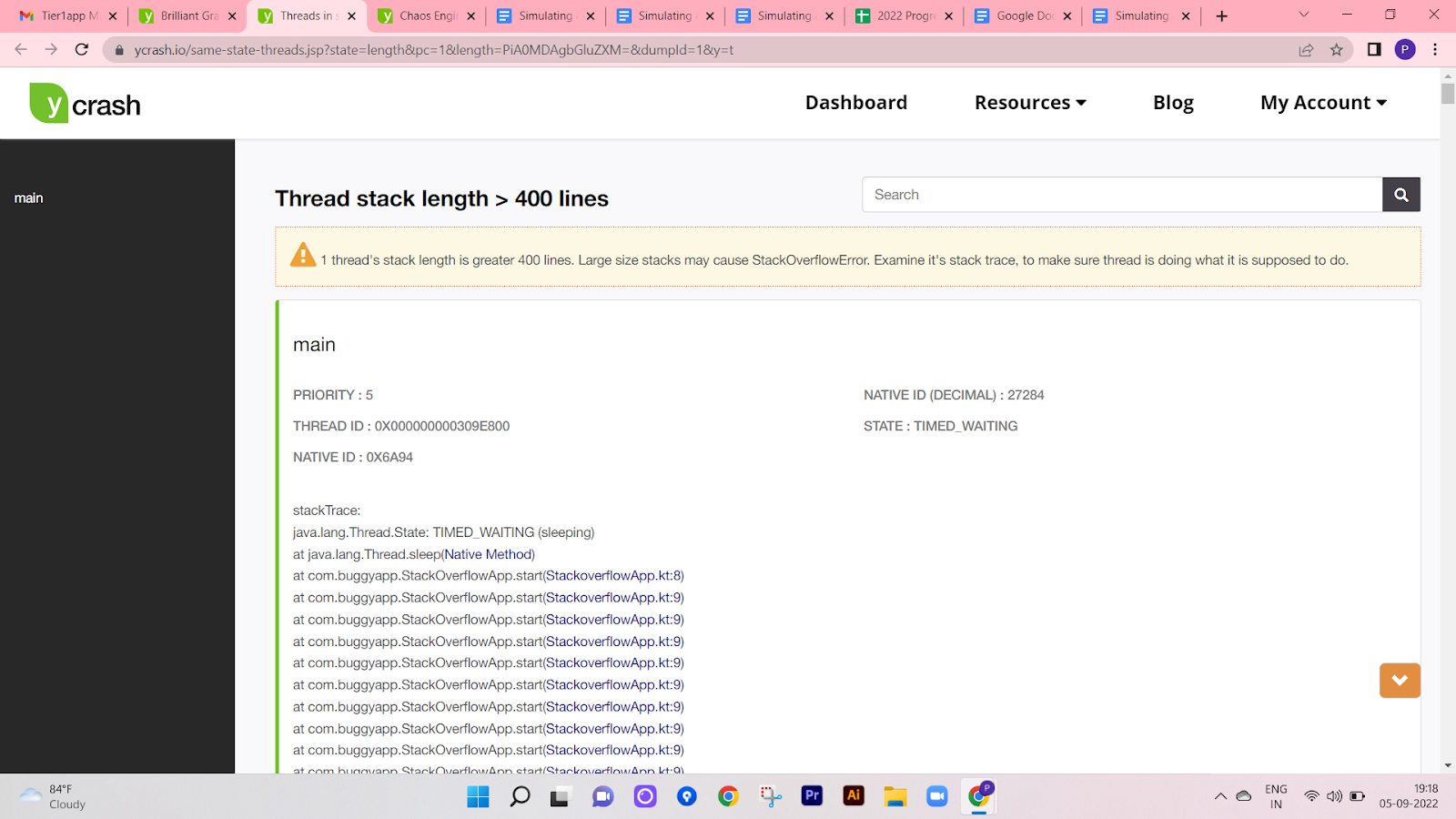Simulating and Troubleshooting StackOverflowError in Kotlin
In this series of simulating and troubleshooting performance problems in Kotlin, let’s discuss how to simulate StackOverflow errors.
Join the DZone community and get the full member experience.
Join For FreeIn this series of simulating and troubleshooting performance problems in Kotlin, let’s discuss how to simulate StackOverflow errors. StackOverflow error is a runtime error, which is thrown when a thread’s stack size exceeds its allocated memory limit.
Video: To see the visual walk-through of this post, click below:
Sample Program
Here is a sample Kotlin program, which generates the StackOverflowError:
package com.buggyapp
class StackOverflowApp {
fun start() {
start()
}
}
fun main() {
System.`in`.read()
try {
println(StackOverflowApp().start())
} finally {
System.`in`.read()
}
}You can notice the sample program contains the StackOverflowApp class. This class has a start() method, which calls itself recursively. As a result of this implementation, the start() method will be invoked infinitely.

Fig: start() method repeatedly added to the thread’s stack, resulting in StackOverflowError
As per the implementation, the start() method will be added to the thread’s stack frame an infinite number of times. Thus, after a few thousand iterations thread’s stack size limit would be exceeded. Once the stack size limit is exceeded, it will result in StackOverflowError.
Execution
When we executed the above program, as expected, java.lang.StackOverflowError was thrown in seconds:
Exception in thread "main" java.lang.StackOverflowError
at com.buggyapp.StackOverflowApp.start(StackOverflowApp.kt:5)
at com.buggyapp.StackOverflowApp.start(StackOverflowApp.kt:5)
at com.buggyapp.StackOverflowApp.start(StackOverflowApp.kt:5)
at com.buggyapp.StackOverflowApp.start(StackOverflowApp.kt:5)
at com.buggyapp.StackOverflowApp.start(StackOverflowApp.kt:5)
at com.buggyapp.StackOverflowApp.start(StackOverflowApp.kt:5)
at com.buggyapp.StackOverflowApp.start(StackOverflowApp.kt:5)
at com.buggyapp.StackOverflowApp.start(StackOverflowApp.kt:5)
at com.buggyapp.StackOverflowApp.start(StackOverflowApp.kt:5)
at com.buggyapp.StackOverflowApp.start(StackOverflowApp.kt:5)
at com.buggyapp.StackOverflowApp.start(StackOverflowApp.kt:5)
at com.buggyapp.StackOverflowApp.start(StackOverflowApp.kt:5)
:
:How To Diagnose ‘java.lang.StackOverflowError’?
You can diagnose StackOverflowError either through a manual or automated approach.
Manual Approach
When an application experiences StackOverflowError, it will be either printed in the application log file or in a standard error stream. From the stack trace, you will be able to figure out which line of code causing the infinite looping.
Automated Approach
On the other hand, you can also use yCrash open source script, which would capture 360-degree data (GC log, 3 snapshots of thread dump, heap dump, netstat, iostat, vmstat, top, top -H,…) from your application stack within a minute and generate a bundle zip file. You can then either manually analyze these artifacts or upload them to the yCrash server for automated analysis.
We used the automated approach. Once the captured artifacts were uploaded to the yCrash server, it instantly generated the below root cause analysis report highlighting the source of the problem.

Fig: yCrash highlighting thread may result in StackOverflowError
You can notice the yCrash tool precisely points out that the thread stack length is greater than 400 lines, and it has the potential to generate StackOverflowError. The Tool also points out the exact stack trace of the thread, which is going on an infinite loop. Using this information from the report, one can easily go ahead and fix the StackOverflowError.
Published at DZone with permission of Ram Lakshmanan, DZone MVB. See the original article here.
Opinions expressed by DZone contributors are their own.

Comments